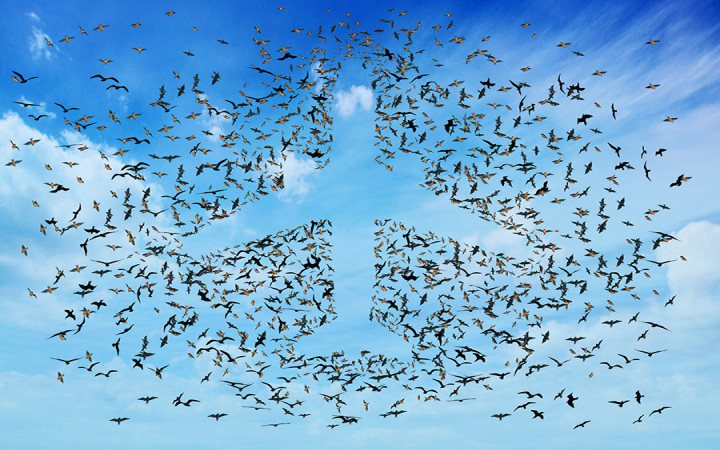Today’s Wonder of the Day was inspired by Brynn. Brynn Wonders, “Why do planes crash?” Thanks for WONDERing with us, Brynn!
Ever since ancient man first roamed Earth, he has looked to the skies and been jealous of the birds flying overhead. Who wouldn't want to stretch out a pair of wings and take to the skies? Not only could you get from Point A to Point B in record time, you'd have a great view all along the way.
Thanks to the Wright brothers, we finally had airplanes thousands of years later. Still, flying inside a large metal tube doesn't exactly replicate the experience of flying like a bird. In fact, ever since the invention of the airplane, birds and planes have shared the skies in an uneasy coexistence.
Although it seems like there's no limit to the space in the skies, birds and airplanes still manage to get in each other's way frequently. As you can probably guess, airplane and bird interactions usually don't end well for either the bird or the plane.
These bird-plane collisions, known as bird strikes, occur thousands of times each year. Nearly all of these are fatal for the birds involved. Fortunately, most bird strikes don't result in significant damage to airplanes or their passengers.
Occasionally, though, large birds can get sucked into airplane engines, causing significant damage and sometimes even causing a crash. As a result of the danger involved with bird strikes, airports have developed a number of safety and conservation measures to minimize bird strikes upon takeoff and landing.
With the noise of airplanes coming and going, you might think that airports wouldn't attract birds. Unfortunately, airports tend to attract large flocks of birds of all different types. Birds seem to be attracted to the large, undeveloped tracts of land that surround most airports as noise and safety barriers.
The hustle and bustle of airports does tend to drive away larger predators. As a result, the lands surrounding airports can be like a sanctuary for birds, especially if they also contain wetlands or drainage ponds.
So how do airports manage the problem of large bird populations near airports? Most use a three-pronged approach by modifying bird habitats, bird behaviors, and aircraft behaviors.
For example, airports might make surrounding lands less attractive to birds by removing seed-bearing plants, removing trees used for nesting, covering water sources with netting, and keeping grass mowed short. They might also adjust flight times and paths to avoid peak times and places for bird activity.
Some of the most effective modification techniques utilize technology. Sonic cannons, lasers, recorded predator calls, and noise generators can all be used to simulate predators to scare birds away.
Perhaps the cutest and furriest modification technique involves introducing a real predator into the midst of the birds: a dog trained to chase birds away. At the Cherry Capital Airport in Traverse City, Michigan, the aviation safety and bird management expert went by the name of K-9 Piper, a Border collie trained to chase birds and other wildlife away from the airport's runways.
Although K-9 Piper passed away in early 2018, he left behind a legacy of faithful service. Wearing a protective vest, ear muffs, and some really cool sunglasses, K-9 Piper patrolled the runways and perimeter fences, chasing away birds and many other types of small animals. There are currently a handful of other dogs on staff at airports around the United States.




